
Clogged pores can block up your skin-care harmony by creating all sorts of nasty problems, including pimples, blackheads and whiteheads. Rambunctious oil glands are partially to blame when the pores get blocked, especially when the overabundance of oil joins up with bacteria, dead skin cells and other debris to form a hard little plug. You can use simple remedies to unblock stubborn pores, but be gentle. Scrubbing, picking and rubbing only make matters worse.
Traditional Tea Tree Oil
Tea tree oil, extracted from the leaves of the Australian melaleuca tree, is often used in place of acne medications such as benzoyl peroxide. Because it is milder, it is less likely to cause reactions such as dryness and irritation. The oil works as a mild disinfectant, and it has been used for centuries to treat skin conditions such as cuts, burns and fungal infections. For best results, use tea tree oil three times every day. Place a small amount on a cotton ball, then dab the oil on blocked pores.
Medicated Pads at Bedtime
Wipe problem areas with a medicated acne pad before you go to bed every night. Look for products containing salicylic acid or glycolic acid, which help slough away dead, dry skin cells. Wash the area first, then open the pores by holding a warm washcloth against your skin for about five minutes before smoothing the pad over the clogs. Use medicated pads strictly according to label recommendations. Don’t use the product if the area is red or irritated.
Gentle Baking-Soda Scrub
Baking soda is a gentle exfoliant that helps to clear blocked pores. To make a baking-soda scrub, mix equal parts baking soda with water. Wash your face and hands, then dip your fingers in the baking-soda mixture and smooth it gently over problem areas. Massage the area carefully for two to three minutes, then rinse with lukewarm water. A baking-soda scrub is gentle enough to use once or twice every week.
Weekly Steam For Your Skin
A steam treatment makes blockages easier to remove by softening the clogged matter. Wash your face with warm water and a mild cleanser first, then pour 1 to 2 quarts of boiling water into a shallow, heatproof bowl. Lean over the bowl and drape a large towel over your head to create a tent and keep the steam from escaping. If your skin is oily, you can safely steam for up to 10 minutes. Dry skin is sensitive and shouldn’t be steamed for more than two to three minutes. After steaming, wipe the area with a soft cloth to remove loosened debris, then apply your favorite moisturizer.
Related Articles

How to Clear Clogged Pores in Adults

How to Use Clearasil
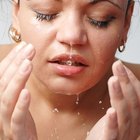
How to Repair Open Pores

Tea Tree Oil as a Natural Remedy for ...
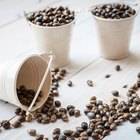
Instructions for Castor Oil Packs for ...

How to Steam Your Face With Essential ...

Are There Ways to Get Rid of Blocked ...

How to Get Rid of All the Tiny Embedded ...
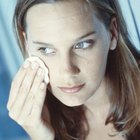
Cleansers for Rosacea That Unclog Pores

How to Get Rid of Irritation From ...

Green Tea Remedy for Blackheads
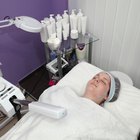
Facial Steamer Instructions

How to Remove Ointments

How to Remove a Dilated Pore on the ...

How to Heal an Inflamed Bikini Area
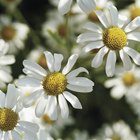
Chamomile Essential Oil Benefits

How to Shrink Pores With Proactiv

How to Keep From Getting Ingrown Armpit ...

How to Stop Facial Redness From Shaving
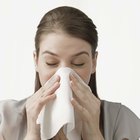
How to Deal With a Chapped Nose From ...
References
- Feed Your Face: Younger, Smoother Skin and a Beautiful Body in 28 Delicious Days; Jessica Wu, MD
- Dr. Denese's Secrets for Ageless Skin: Younger Skin in 8 Weeks; Adrienne Denese
- 100 Beauty Techniques; Parvez Handa
- The Natural Remedy Bible; John Lust, Michael Tierra
- Recipes for Homemade Face And Body Products; Gene Ashburner
- Drugs.com: Salicylic acid pads
- AARP Prescription for Drug Alternatives; James F. Balch, Mark Stengler, Robin Young-Balch
- 1,801 Home Remedies: Trustworthy Treatments for Everyday Health Problems; Edited by Reader's Digest
Writer Bio
M.H. Dyer began her writing career as a staff writer at a community newspaper and is now a full-time commercial writer. She writes about a variety of topics, with a focus on sustainable, pesticide- and herbicide-free gardening. She is an Oregon State University Master Gardener and Master Naturalist and holds a Master of Fine Arts in creative nonfiction writing.
Photo Credits
Comstock/Stockbyte/Getty Images